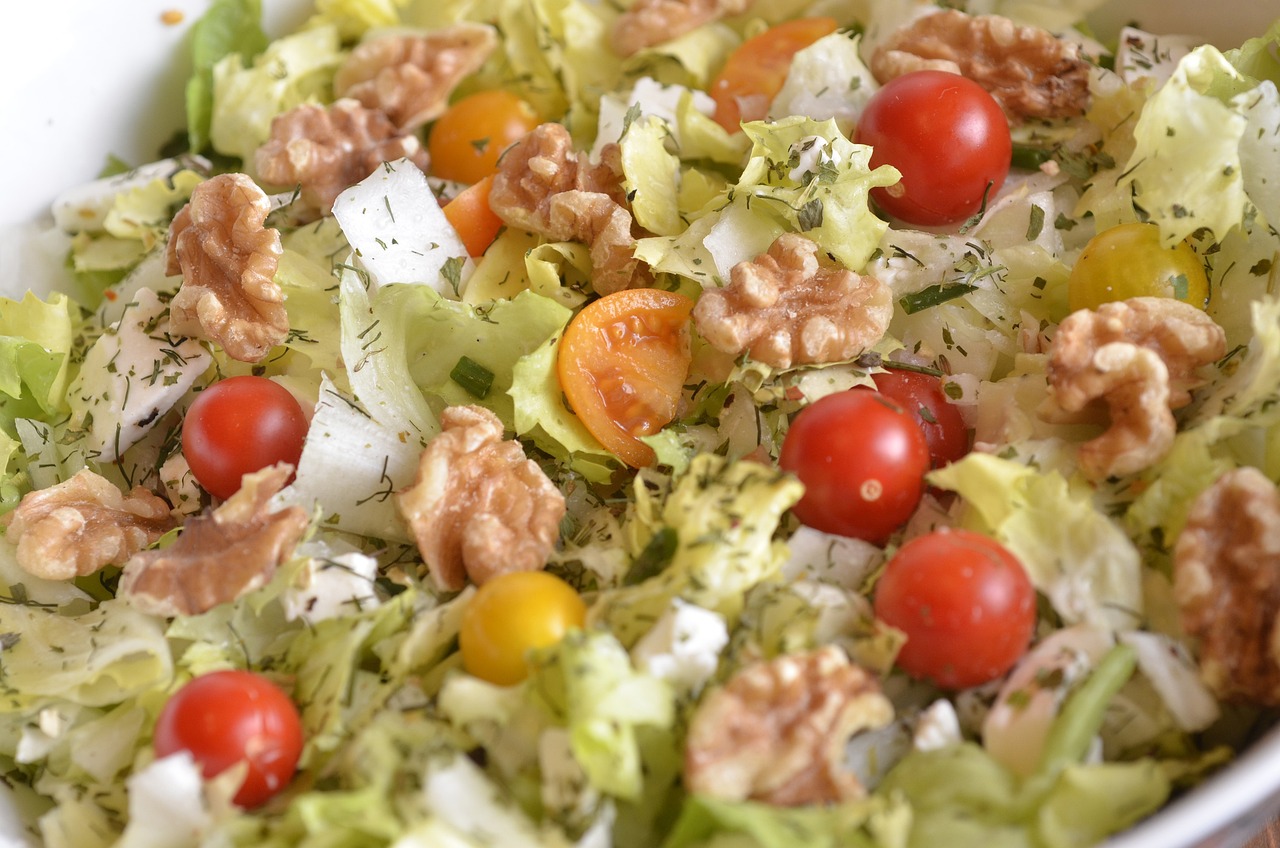Imagine a diet that not only helps you shed unwanted pounds, but also promotes improved digestion, increased energy levels, and clearer skin. The Paleo Diet, also known as the “caveman diet,” has been gaining popularity in recent years for its remarkable health benefits. By mimicking the eating habits of our ancestors, the Paleo Diet focuses on whole, unprocessed foods and eliminates grains, dairy, legumes, and processed sugars. In this introduction to the Paleo Diet, you’ll discover how this ancient way of eating can transform your health and well-being.

What is the Paleo Diet?
The Paleo diet, also known as the Paleolithic diet or caveman diet, is a dietary approach that mimics the eating habits of our ancestors from the Paleolithic era. It focuses on consuming whole, unprocessed foods that would have been available to humans during that time. By following this diet, you are essentially embracing a more primal and natural way of eating.
Basic definition
The basic definition of the Paleo diet is a way of eating that emphasizes whole, unprocessed foods such as lean meats, fish, vegetables, fruits, nuts, and seeds while avoiding processed foods, grains, legumes, dairy products, and added sugars.
Principles of the diet
The Paleo diet is based on a few key principles. One of the main principles is that it eliminates processed foods, which are often high in sugar, unhealthy fats, and artificial additives. It also promotes the consumption of lean proteins, healthy fats, and a wide variety of fruits and vegetables to provide essential nutrients.
Another principle of the Paleo diet is that it eliminates grains and legumes. This is because grains such as wheat, barley, and oats were not consumed in the Paleolithic era, and legumes like beans and lentils were not readily available. These foods can sometimes cause digestive issues and may contain antinutrients that can interfere with nutrient absorption.
Lastly, the Paleo diet aims to reduce the consumption of added sugars and sweeteners. This is because our ancestors did not have access to highly refined sugars and sweeteners, and excessive sugar intake has been linked to various health problems, such as obesity and diabetes.
Historical background
The Paleo diet draws inspiration from the eating habits of our ancestors who lived thousands of years ago. During the Paleolithic era, humans were hunter-gatherers and relied on hunting animals and gathering plant-based foods to survive. This diet consisted mainly of lean meats, fish, fruits, vegetables, nuts, and seeds. The rise of agriculture and modern food processing techniques introduced grains, legumes, and dairy products into our diets, which are not part of the Paleo diet. Proponents of the Paleo diet believe that by returning to the eating patterns of our ancestors, we can improve our overall health and well-being.
Foods Allowed on the Paleo Diet
Meat and fish
Meat and fish are staple foods in the Paleo diet. Lean cuts of meat such as chicken, turkey, and beef are preferred, as they provide essential proteins and nutrients. Fish, particularly fatty fish like salmon and mackerel, are also highly encouraged due to their high omega-3 fatty acid content, which has numerous health benefits.
Vegetables and fruits
The Paleo diet emphasizes the consumption of a wide variety of vegetables and fruits. These plant-based foods provide essential vitamins, minerals, and fiber. Non-starchy vegetables such as broccoli, spinach, kale, and peppers are excellent choices. Fruits, especially berries, apples, and citrus fruits, are also recommended due to their antioxidant content.
Healthy fats and oils
Healthy fats and oils play a vital role in the Paleo diet. Avocados, coconut oil, olive oil, and nut oils are all encouraged sources of healthy fats. These fats provide energy, help absorb fat-soluble vitamins, and contribute to overall satiety.
Nuts and seeds
Nuts and seeds are another important component of the Paleo diet. Almonds, walnuts, cashews, and flaxseeds are all excellent choices. They provide healthy fats, protein, and essential nutrients. However, it is important to consume them in moderation as they are also calorie-dense.
Foods to Avoid on the Paleo Diet
Grains and legumes
Grains such as wheat, rice, oats, and corn are not allowed on the Paleo diet. These foods contain gluten and other potentially harmful substances that can cause digestive issues and inflammation in some individuals. Legumes, including beans, lentils, and peanuts, are also avoided due to their lectin content, which can interfere with nutrient absorption.
Dairy products
Dairy products are not part of the Paleo diet. While they provide calcium and other nutrients, many individuals have difficulty digesting lactose, a sugar found in milk and other dairy products. Additionally, the inclusion of dairy in our diets is a relatively recent event in human history.
Processed foods
Processed foods are off-limits in the Paleo diet. These include pre-packaged meals, fast food, sugary snacks, and processed meats. These foods are often high in unhealthy fats, added sugars, and artificial additives. The focus of the Paleo diet is on consuming whole, natural foods in their most unprocessed form.
Added sugars and sweeteners
The Paleo diet restricts the consumption of added sugars and sweeteners. This includes table sugar, corn syrup, honey, agave nectar, and artificial sweeteners. These sugars provide empty calories and are linked to various health problems such as obesity, diabetes, and tooth decay.
Benefits of the Paleo Diet
Improved digestion
Many individuals who follow the Paleo diet report improved digestion and a reduction in digestive issues such as bloating, gas, and diarrhea. This is likely due to the elimination of processed foods, grains, and legumes, which can sometimes contribute to these issues.
Weight loss and management
The Paleo diet can be an effective approach for weight loss and weight management. By focusing on whole, nutrient-dense foods, the diet naturally reduces calorie intake and promotes a balanced approach to eating. Additionally, the diet’s emphasis on protein and healthy fats can increase satiety and reduce cravings.
Increased energy levels
By eliminating processed foods and added sugars, the Paleo diet can lead to more stable blood sugar levels. This can result in increased energy levels throughout the day, reducing energy crashes and promoting overall vitality.
Reduced inflammation
The Paleo diet’s focus on anti-inflammatory foods, such as fruits, vegetables, and omega-3 fatty acids, can help reduce systemic inflammation in the body. Chronic inflammation has been linked to various health conditions, including heart disease, diabetes, and autoimmune disorders.

Potential Drawbacks and Considerations
Limited food choices
One of the potential drawbacks of the Paleo diet is the limited food choices compared to a traditional Western diet. The elimination of grains, legumes, and dairy products can make meal planning and dining out more challenging. However, with proper guidance and creativity, it is possible to enjoy a varied and satisfying Paleo diet.
Nutritional deficiencies
Eliminating entire food groups, such as grains and dairy, can increase the risk of nutrient deficiencies if not carefully planned. It is important to compensate for the nutrients typically found in these foods by incorporating alternative sources of calcium, vitamin D, and fiber, such as leafy greens, fish, and fortified non-dairy milk.
Cost and accessibility
The Paleo diet can be more expensive compared to a typical Western diet due to the emphasis on high-quality, organic, and pasture-raised animal products. Additionally, access to certain Paleo-friendly ingredients, such as grass-fed meats or specialty health foods, may be limited in some areas. However, it is still possible to follow a Paleo diet on a budget and make choices that align with your specific circumstances.
Adherence challenges
Sticking to the Paleo diet can sometimes be challenging, especially when faced with social events, travel, or limited food options. It requires planning, preparation, and a certain level of commitment. However, with time and practice, it becomes easier to navigate various situations and make choices that align with your health goals.
Getting Started with the Paleo Diet
Setting goals and expectations
Before starting the Paleo diet, it is important to establish clear goals and expectations. Determine why you want to follow this diet and what you hope to achieve. Having a clear vision will help you stay motivated and committed throughout your journey.
Meal planning and preparation
Meal planning and preparation are crucial for success on the Paleo diet. Designing a weekly meal plan and prepping ingredients or meals in advance can save time and ensure you have nutritious options readily available. Consider experimenting with different recipes and meal ideas to keep things interesting.
Gradual transition approach
For some individuals, transitioning to the Paleo diet all at once can be overwhelming. Consider taking a gradual approach by gradually eliminating processed foods, grains, and legumes while adding more Paleo-approved foods to your diet. This can make the transition more manageable and sustainable in the long run.
Finding support and resources
Seeking support from friends, family, or online communities can be helpful when starting the Paleo diet. Connect with others who follow a similar eating approach to share experiences, meal ideas, and tips. Additionally, there are numerous books, websites, and social media accounts dedicated to the Paleo diet, providing valuable information and resources.
Sample Paleo Diet Meal Plan
Breakfast ideas
- Vegetable omelet with mushrooms, spinach, and a side of avocado
- Smoked salmon with scrambled eggs and roasted sweet potatoes
- Coconut flour pancakes with berries and a drizzle of almond butter
Lunch options
- Grilled chicken salad with mixed greens, cherry tomatoes, cucumbers, and olive oil dressing
- Salmon avocado wrap with lettuce and tomato
- Cauliflower fried rice with shrimp, vegetables, and a side of sliced apples
Dinner suggestions
- Baked chicken breast with roasted Brussels sprouts and a side of mashed cauliflower
- Grass-fed beef burger topped with sautéed mushrooms and served with sweet potato fries
- Grilled salmon with asparagus and a quinoa and vegetable pilaf
Snack recommendations
- Hard-boiled eggs
- Almonds and dried fruit
- Carrot sticks with guacamole
Paleo Diet and Exercise
Importance of physical activity
Regular physical activity is an essential component of a healthy lifestyle, complementing the Paleo diet. Engaging in exercise promotes cardiovascular health, increases muscle strength and endurance, boosts mood, and improves overall well-being. It is recommended to incorporate a combination of cardiovascular exercise, strength training, and flexibility exercises into your routine.
Types of exercise that complement the diet
When following the Paleo diet, activities such as walking, jogging, hiking, cycling, and swimming are all excellent choices. These forms of exercise align with the natural movement patterns of our ancestors and can be easily incorporated into daily life. Additionally, strength training exercises, such as weight lifting or bodyweight exercises, can help build lean muscle mass and support overall health.
Optimal timing of meals and workouts
To optimize performance during exercise, it is important to properly fuel your body. Eating a balanced meal that includes protein, healthy fats, and carbohydrates before a workout can provide the necessary energy and support muscle recovery. Following a workout, consuming a post-workout meal or snack that includes protein and carbohydrates can aid in muscle repair and replenish glycogen stores.
Recovery and fueling strategies
Proper recovery and fueling strategies are vital for optimal performance and overall health. Adequate rest, hydration, and sleep are important for recovery and muscle repair. Additionally, consuming nutrient-dense foods from the Paleo diet, such as lean proteins, healthy fats, and antioxidant-rich fruits and vegetables, can help reduce inflammation and support recovery.
Addressing Common Misconceptions
Is the Paleo diet too restrictive?
While the Paleo diet eliminates certain food groups, it still offers a wide variety of nutrient-dense foods. With creativity and proper planning, the Paleo diet can be enjoyable and satisfying, without feeling excessively restrictive.
Can it meet all nutritional needs?
When properly planned, the Paleo diet can meet most of your nutritional needs. By emphasizing whole, unprocessed foods, the diet provides essential nutrients such as protein, healthy fats, vitamins, and minerals. However, it is important to ensure adequate intake of specific nutrients that may be limited, such as calcium, vitamin D, and fiber.
Is it suitable for everyone?
The Paleo diet is generally well-tolerated and suitable for most individuals. However, it may not be appropriate for certain populations, such as pregnant or breastfeeding women, individuals with specific medical conditions, or those with nutrient deficiencies. Consulting with a healthcare professional or registered dietitian before starting the Paleo diet is recommended.
Can it be sustainable in the long term?
Sustainability of any diet ultimately depends on personal preferences, lifestyle, and individual goals. The Paleo diet can be sustainable in the long term if it aligns with your values and is adapted to suit your individual needs. Continuously learning, adapting, and finding enjoyment in the diet can help maintain long-term adherence and success.
Tips for Long-Term Success
Continuing education and adaptation
Stay informed about the latest research and updates related to the Paleo diet. As scientific knowledge evolves, new information may arise, influencing how the diet is approached. Continuously educating yourself and adapting your approach will contribute to long-term success.
Listening to your body’s signals
Pay attention to how your body responds to the Paleo diet and adjust accordingly. Everyone is unique, and what works for one person may not work for another. Tune in to your body’s signals of hunger, fullness, and overall well-being to ensure you are nourishing yourself properly.
Building a supportive environment
Surround yourself with a supportive network of friends, family, or like-minded individuals who understand and respect your dietary choices. Having a support system can provide encouragement, accountability, and a sense of community.
Celebrating achievements and milestones
Recognize and celebrate your progress and achievements along the way. Whether it’s reaching a weight loss milestone, successfully completing a challenging workout, or simply feeling better and more energized, take the time to acknowledge your accomplishments and use them as motivation to continue your Paleo journey.
In conclusion, the Paleo diet offers a way of eating that focuses on whole, unprocessed foods that were part of our ancestors’ diet during the Paleolithic era. By embracing this dietary approach, you can reap numerous benefits such as improved digestion, weight loss, increased energy levels, and reduced inflammation. While the Paleo diet may have some considerations and challenges, it is possible to navigate them and achieve long-term success through proper planning, gradual transition, and support. Remember to listen to your body, adapt as needed, and celebrate your achievements along the way.




